This Post May Contain Affiliate Links
In compliance with the FTC guidelines, please assume that some of the links on these posts and sites are affiliate links (Amazon or others) from which I may earn a small compensation/commission from sales of certain items at no extra cost to you from qualifying purchases.
Anytime you see a link that looks like “astore.com, paid link, #ad, #CommissionsEarned or Amazon/Amazon.com/ca,”… it can be assumed that it is an affiliate link.
To learn more, follow the link below.
Active vs Passive Guitar Pickups
What Is A Guitar Pickup
Electronic Representation
Pickups to guitarists are what microphones are to singers.
The pickup technology is called a transducer that converts one type of energy to another.
The Pickup/Transducer captures and converts the vibrations of your guitar’s strings into an electrical signal; these converted signals can be sent through to your pedals and amplifiers from your guitar and out through speakers or transferred directly into recording software. (More on this later)
The result of this electronic sonic representation creates an amplified sound more significant than its origin.
Unlike an acoustic, the electric guitar would not make much noise and stay relatively silent without this design.
History Of The Pickup
The first guitar appearance with a “pickup” was attempted unsuccessfully in 1928.
But in 1931/32, a Rickenbacker Electro A-22 or “Frying Pan” lap steel guitar, called because of its circular body and long neck resemblance to the kitchen accessory, was created by George Beauchamp and Adolf Rickenbacker.
Made from cast aluminum, it sported a “Pickup” that incorporated a pair of horseshoe magnets that arched over the strings and were awarded a patent in 1937. (See image)
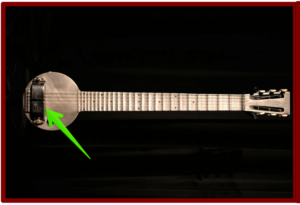
Image of the Ro-Pat-In Cast Aluminum Electric Hawaiian “Frying Pan” Guitar w/Pickup -Author Museum of Making Music at English Wikipedia and is licensed under the CC Attribution 3.0 Unported.
Pickup Types & Categories
There are multiple styles and guitar pickup designs, but they generally come in 2 Types & Categories...
Types
- Single &
- Double coil or Humbucker
Called Humbucker because of the way the coils are connected in reverse polarity, cancelling out the hum and other noise you usually find in single coils. (See image)
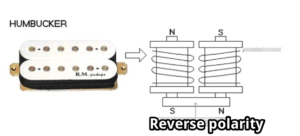
Image of Passive Humbucker courtesy of Wikimedia-Author Lukas and is released into the public domain by its author,
The single coil type is slimmer shaped, and the humbucker type is a broader design. It is positioned on your instrument’s body between the Neck and Bridge directly below where you pick or strum the strings (see image) and can also have covers to increase their cosmetic appeal.
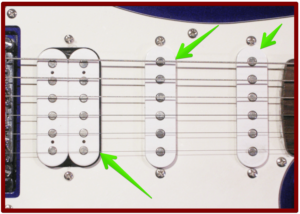
An HSS Pickup configuration-Image courtesy of Wikimedia and is released into the public domain.
Categories
- Passive &
- Active
Are Humbucker Pickups Active Or Passive
Humbuckers are both, but with some differences.
In Passive Humbucker models, the 2 coils are connected; with Active pickup models, the coils are not; also, a component in the preamp cancels the noise and works to boost the signal.
So cosmetically, they are similar in size and appearance, but design-wise, they are very different.
Pickup Configurations
Depending on the type of sound wanted, pickups can be placed in many different configurations on a guitar, usually found with passive models.
A configuration combines pickups using single coils “S” and or Humbuckers “H,” alone or combined.
A wide range of sonic tones can be attained with varied pickups and switching options.
The Anatomy Of A Passive Pickup
Passive pickups are the most common and popular pickup type on electric guitars. It comprises of a combination of a bobbin, magnets (x6) & a coil of copper wire. (See image)
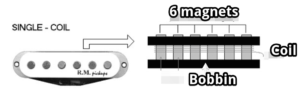
Image of Single coil courtesy of Wikimedia-Author Lukas and is released into the public domain by its author,
How It Works
String vibrations disrupt the pickups magnetic field read as a current, causing the coil to generate an electrical signal that then travels through your cable to your peddles and amplification, with no need for an external power source, and considered to be the purest form of amplification. (See image)

The image of a Magnetic field and Pickup coil, courtesy of Wikimedia -Author Mike Run, is licensed under the CC Attribution-SA 4.0 International.
Output & Tone
Even though the concept is simple electronically (bobbin, magnets & wire,) how the pickups are made create different outputs and tones and becomes a balancing act.
Some processes to consider…
- Magnet type and strength
- The type of wire and insulation used
- How the winding is done
- The number of wire turns on the bobbin made when the pickup is wrapped – Generally, more winding increases output but loses brightness, with fewer windings decreasing output but improving clearer tones.
Tone Controls
Despite the countless output & tonal options in the passive pickup designs, it is essential to note that guitar tone controls only act as low passive filters and can only roll off or reduce high-end frequencies, for there is no preamp to boost the signal.
High Impedance
Passive pickups give you an output signal with high impedance (high voltage, low current.)
This signal accounts for high-frequency loss and doesn’t allow for long cable runs, also causing the tone to change when the guitar’s volume control is turned down; the quality of your amp is also essential in getting the most out of your passive pickup.
The Anatomy Of An Active Pickup
Active pickups (first developed in 1976 and widely used in the early 80s to the present) operate and are made of similar materials to a very low-output passive pickup but with 3 main differences…
- Power requirements
- Less winding
- Fewer coils
Active refers to a pickup with a higher output with more consistent, strong, focused, clear and tight tones.
It responds aggressively to high levels of gain and overdrive settings but with less residual hum or noise and has a more modern sound than the passive counterpart offering some great sonic options. (See image)
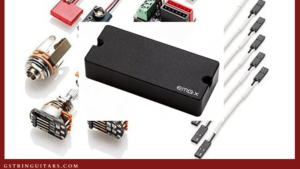
EMG 707X 7-String Black Active Guitar Pickup w/ EMG Solderless Wiring Kit-Images courtesy of Amazon
How It Works
Fewer Windings, Number Of Coils & Quiet
Like a traditional passive pickup, it still magnetizes the guitar strings and picks up the vibration through the magnetic pull, creating an electrical signal induced in the coil.
But because they do not need as strong of an electrical current to boost the signal, they are wound less and use a smaller number of coils, supplemented and amplified by the preamp and various filters onboard the guitar, operating with the power of a battery.
Active pickups are more resistant to hum, less noisy, and less sensitive to external sounds than passives and anything but weak.
Low Impedance
Because of the built-in preamp, a low-impedance (low-voltage, high-current) signal makes for an aggressive or “hotter” pickup.
“Hotter” refers to a signal output being stronger.
This signal offers better transfer from the guitar to the amplifier. Unlike high impedance, it handles longer cables, and the tone does not change when you turn down your guitar’s volume control.
Sustain
With a less magnetic pull, the strings can ring out longer, resulting in the potential for more sustain.
Tone Versatility
With active pickups, the versatility in shaping your sound is more readily available. The way they interact with your guitar’s electronics, active pickups offer more control over the tone and output.
Can You Put Active Pickups In A Passive Guitar?
Active and passive pickups are very different in design.
The two types of pickups can cost similarly, but if you want to change from one technology to another, modifications are required and can lead to a significant expense.
The cost is in the complexity of the design and parts adding to the price, i.e. adding a battery compartment. (See image)
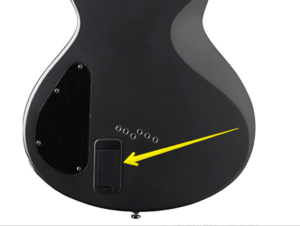
A Washburn (PXL10EC-U) w/EMG 85/81 Active pickups and Battery compartment on back for 9v power source-Image courtesy of Amazon
This is also how you will know if pickups are Passive or Active.
If your guitar requires a battery, chances are that it has active pickups.
If it doesn’t or will function without a battery, then the pickups would be considered passive.
Batteries Batteries Everywhere
It’s the crosses we must bear as guitarists, dependence on batteries for peddles, accessories and even active pickups.
If your battery runs out of power or is almost on its last energy leg, like your peddle, it will either quit working or leave you with no sound or funny results.
Future Advancements

As guitar building and technology evolve, the materials and techniques change and improve, building on the pickup concepts to achieve new levels.
Along with artists seeking more advancements in their signature model instruments like Marty Friedman and his Jackson MF-1.
The Signature MF-1
Marty Friedman wanted a new brand of passive EMG pickups where he would not need to concern himself with batteries but still get the dynamic EMG Active Response Punch and Clarity he was used to playing with…
And they delivered…
“When I heard this pickup, I knew it was ‘the one because it made me want to keep playing and never stop. This is my sound — I’m glad EMG took the time to get it right.”
Marty Friedman
Video
How Do You Know Which Pickup To Have?
Both types are tools that provide players with variety and give options for what is better for the situation.
Did You Like This Article?
Check out the post on a Guitar string dampener.
Also…
Leave your comments in the section below, and if you would like me to review a favourite guitar, or guitar accessory, shout out.
As always, stay the course and keep playing.
Feature image courtesy of Céline Martin from Pixabay
Robert Image by Goran from Pixabay
Road signs Image by Gerd Altmann from Pixabay
Image of Steve Morse Playing live by Carlton morris from Pixabay

Starting A Journey At 7 Years Of Age, The Love For The Guitar Only Became Stronger Going Into My Teens. This Leading To An Exciting Time Of Teaching, Performing, And Recording. Join Me Now As We Can Bring The Love Of This Instrument To Other Musicians Globally.


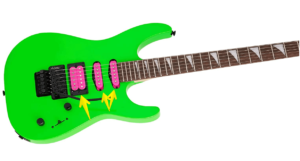
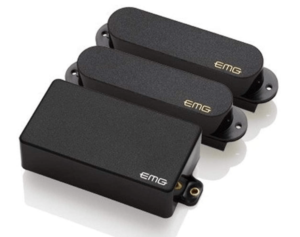







I really appreciate this article and history on guitar pickups, others will benefit from your plain language explanations I’m sure.
I like what you said about the pickups being to electric guitar players what the microphone is for the singer but it seems to me a better analogy would have been auto-tune to singers as the pickup is responsible for for more, like you mention than just amplifying the sound, sort of giving life to it.
Just at the basest level, is there anything superior about either the passive or active pickup designs?
Hello Joseph
First, thank you for coming by the site and leaving your thoughts and feedback.
Pickups are much more than an accessory and technology for a guitar and have become so much more personalized just because of the player’s and the tool’s development.
But to answer your question about either the passive or the active being superior to each other, because there are so many different factors involved and are so personal to players, it just comes down to the player and their overall appreciation of what sounds good to their ears.
The same conversation is in some of the other guitar accessories like string dampeners, and discussion and debates can be held on both fronts of the topic.
Mostly just pickup a guitar with either set of pickups and run it through a similar amp and peddles and see for yourself what you come up with.
Feel free to read more of our posts, and do not hesitate to give us more feedback.
Dino @ gstringuitars
You are asking a person who can not take an affiliate link from amazon and place it on my website. I found what come to be possible so exciting, plus, I did not know anything about guitars but loved the music. I found the articles very interesting, informative and exciting. MAN, GREAT WEBSITE Exploring the layout was fantastic! I love that kind of music. I am going to keep your website for my own personal purchasing. And I will tell others about it. 6 GOLD STARS MY MAN
Hello April
Nice to meet you, and thankyou for coming to our site and for the empowering words of encouragement.
We are a relatively new site, but are looking forward to growing and taking a market share of the industry with attention to adding value first.
When we started like you were involved in a huge learning curve (and still are) just at different levels of the journey.
Please feel free to add your thoughts on how you would like to see us improve, for we always appreciate the perspective of our readers.
Again thank you.
Your friends at Gstringuitars